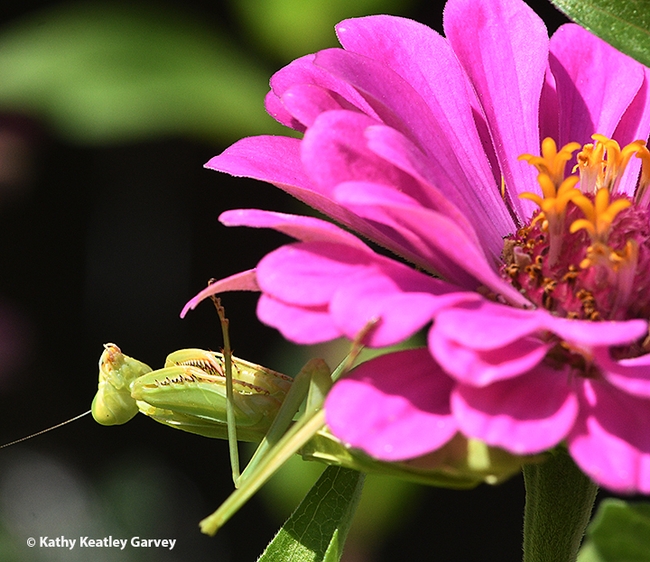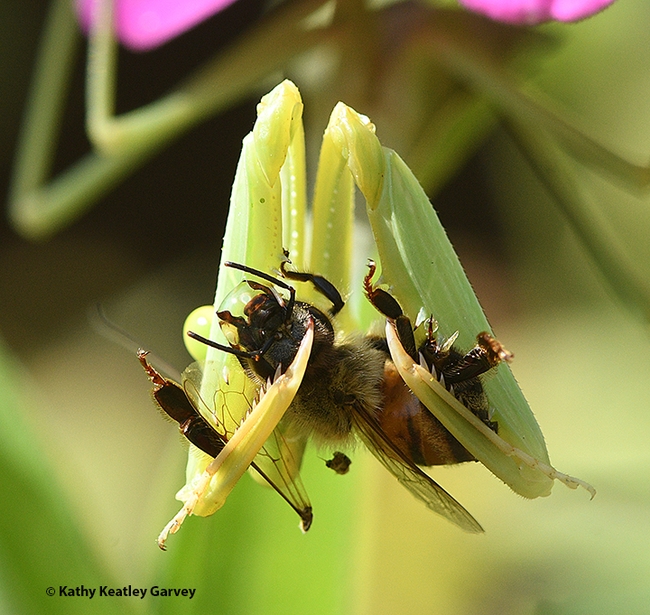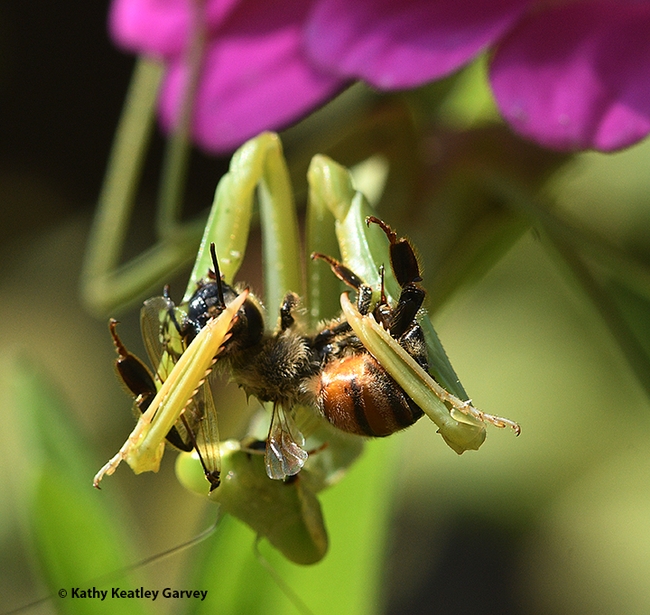
Often it's so camouflaged that it totally blends in with its habitat. It can rotate its head 180 degrees--and nothing, it seems, can escape its view.
Praying mantises are not considered biological pest control agents because basically they'll eat anything they can catch: from your favorite pollinators (bees and butterflies) to your favorite beneficial insects (lady beetles and assassin bugs), your favorite bird (hummingbird) to pests (stink bugs and lygus bugs) to syrphid flies, green bottle flies, and wandering caterpillars that happen to cross its path.
And they'll eat one another...catch me if you can!
Truly, they are not picky eaters like little humans who scowl at a food, push it around their plates, or "accidentally" drop it on the floor for the dog to grab.
"Over 2,000 mantid species occur in the world, mostly in tropical and subtropical regions," according to the UC Statewide Integrated Pest Program (UC IPM). "At least 9 mantid species occur in California. The Arizona or bordered mantid (Stagmomantis limbata), Bistanta mexicana, California mantid (Stagmomantis wheeleri =S. californica), Litaneutria ocularis =Litaneutria obscura, and small gray mantid (Litaneutria pacifica) are native species. Chinese mantid (Tenodera sinensis), European mantid (Mantis religiosa), Mediterranean mantid (Iris oratoria), and South African mantid (Miomantis caffra) are introduced."
"Mantids (mantises) are among the largest insects," UC IPM says. "Adults generally range from 2 to 5 inches (5–12 cm) long. Adults and nymphs (immatures) are elongate and usually brown, green, or yellowish; a single species can have all 3 color phases, such as the California mantid, Stagmomantis wheeleri =S. californica."
A mantis has two spiked forelegs that enable it to grasp and subdue its prey. It's a death grip...or a dinner grip...Ever seen a praying mantis "cradle" its prey?
This mantis, below, is a Stagmomantis limbata. Dinner was a bee. Earlier it preyed on a green bottle fly.
Attached Images:

This praying mantis, Stagmomantis limbata, has just ambushed a honey bee and is grasping it in its spiked forelegs. There is no Harry Houdini-kind of escape. (Photo by Kathy Keatley Garvey)

Death grip. With its two spiked forelegs, the praying mantis firmly grasps the honey bee. Photo by Kathy Keatley Garvey)